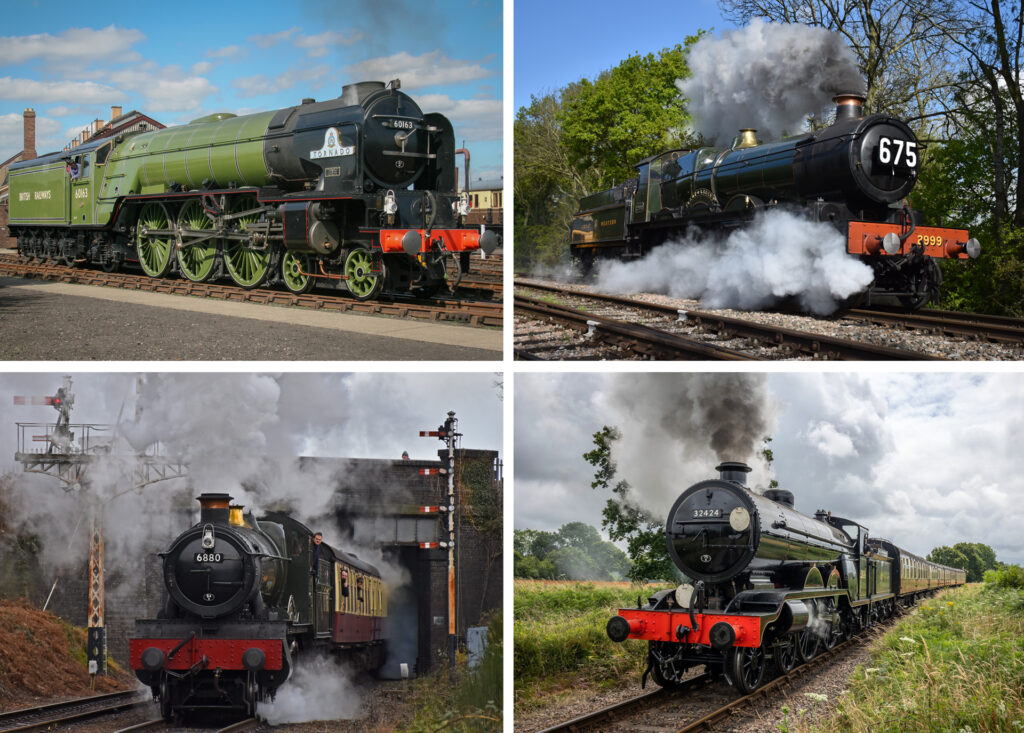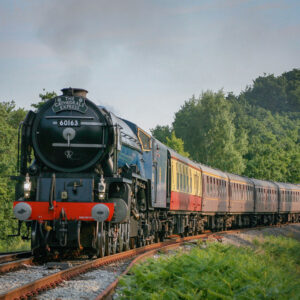Get ready for Giants of Steam 2025- A celebration of new build steam!
This incredible event will shine a spotlight on the new chapter of railway preservation, highlighting impressive new-build steam locomotives.
The Bluebell Railway is delighted to announce that 60163 Tornado, 6880 Betton Grange and 2999 Lady of Legend will be our guest locomotives for this year’s gala, running alongside our very own newly built locomotive, 32424 Beachy Head.
We must thank the A1 Steam Locomotive Trust, The Betton Grange Society & The Great Western Society, Didcot for allowing these engines to take part in our gala in October.
This event is aiming to be the biggest gathering of newly built standard gauge steam locomotives so far in preservation. An event not to be missed!
Giants of Steam 2025 marks an important event on the calendar not only for The Bluebell Railway but also for Railway 200, a celebration of 200 years of railway history. Don’t miss this rare opportunity to witness these awe-inspiring locomotives in action, celebrating the past, present, and future of steam.
Further information and timetables will be issued in due course. Don’t forget to mark this in your diaries for the new date for Giants Of Steam 2025 which will be October 17th – 19th.
Make sure you sign up for our weekly newsletter and keep an eye on our social media for any further updates on this exciting gala.
Visiting Engines for Giants of Steam 2025
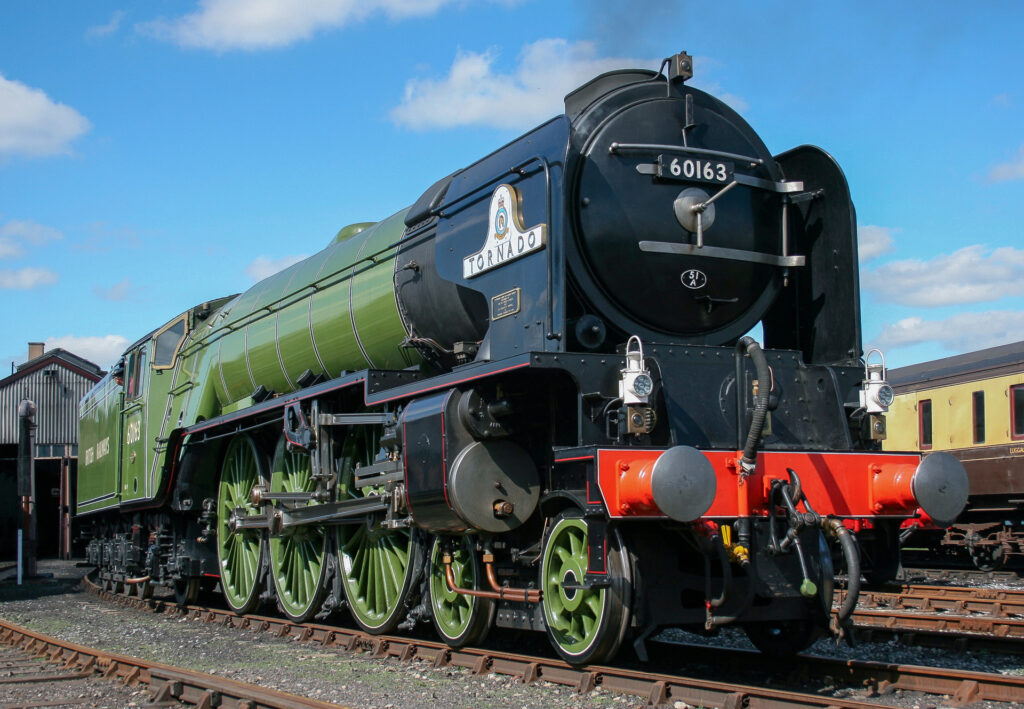
LNER A1 Peppercorn Pacific 60163 ‘Tornado’
60163 Tornado is a remarkable locomotive, built as the first standard gauge new build steam engine in Britain since ‘Evening Star’ was completed in 1960. Based on the original Peppercorn A1 Pacific class, Tornado was constructed from scratch by the A1 Steam Locomotive Trust to replicate one of the 49 A1s that were scrapped following the end of steam on British Railways.
Designed by Arthur Peppercorn, the original A1 Pacific locomotives were among the most advanced express passenger locomotives of their time, built between 1948 and 1949 for the Eastern Region of British Railways. They were used on several different express and fast passenger and freight services throughout their working lives.
However, none of the original locomotives were preserved, the last of which was withdrawn in 1966. This left a gap in the UK’s steam preservation scene. In response, a dedicated group of railway enthusiasts founded the A1 Steam Locomotive Trust in 1990, setting out to construct a brand-new A1 using original plans and modern materials. Having seen advances in technology and success in other projects, such as the monumental project restoration of 71000 ‘Duke Of Gloucester, ’ gave the A1ST the drive to build a new A1 Pacific.
Construction began in the mid-1990s, with major components manufactured across the UK and Europe. The locomotive’s frames were cut in 1994, followed by wheel casting, motion forging, and cab construction. A key milestone was the assembly of Tornado at the newly established Darlington Locomotive Works, where components were gradually brought together. The largest single expense—the boiler—was built in Germany and fitted in 2006. After years of meticulous engineering, Tornado moved under its own power for the first time in August 2008, marking the return of an A1-class locomotive to Britain’s rails.
In January 2009, Tornado made its mainline debut. It quickly became a favourite on heritage and mainline railways, regularly featuring in rail tours, special events, and even television appearances. Notably, in 2017, Tornado achieved 100 mph on a test run, making it the first British steam locomotive to reach this speed since the 1960s.
Tornado has continued to operate across the UK, maintaining its status as one of the most famous steam locomotives in operation today. It has undergone routine maintenance and upgrades, including fitting with modern safety systems like the European Train Control System (ETCS). Tornado continues to delight steam enthusiasts and the public alike, ensuring the legacy of the Peppercorn A1s lives on.
The Bluebell Railway would like to thank the A1 Steam Locomotive Trust for allowing ‘Tornado’ to take part in this very special Giants of Steam weekend.
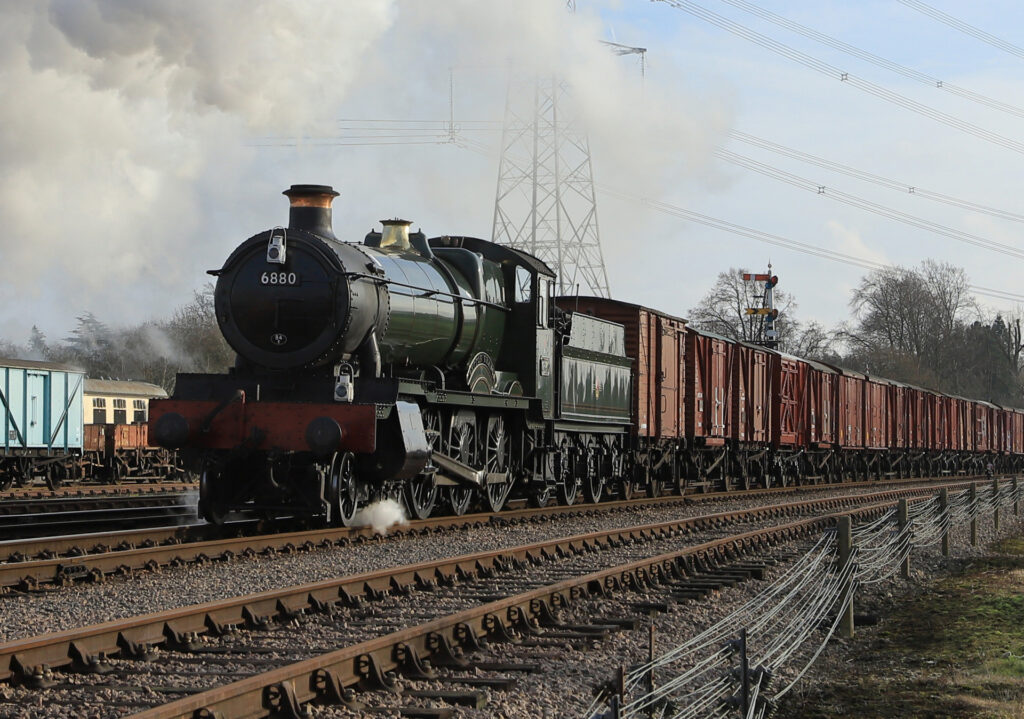
GWR Grange Class 6880 ‘Betton Grange’
6880 Betton Grange is a newly built Great Western Railway (GWR) locomotive, recreating the long-lost Grange class, for which none of the original class of engines were preserved.
Designed by Charles Collett, the original class consisted of 80 locomotives in total built between 1936 and 1939, combining the boiler of a Hall class with the smaller 4-6-0 wheel arrangement of a Manor, making them powerful yet versatile engines for mixed-traffic duties. With all members of the class scrapped by the early 1960s, The Betton Grange project was launched in 1998 to recreate a missing piece of Great Western Railway (GWR) history. The locomotive, numbered 6880, follows the sequence GWR would have used had the class continued.
Construction began at the Llangollen Railway, combining newly fabricated parts with salvaged components from other GWR locomotives. The mainframes and cab were cut from new metal in 2004. A major milestone came in 2005 when the society acquired the boiler from 7927 Willington Hall, which was later overhauled at Tyseley. The bogie and tender were borrowed from Cogan Hall to expedite completion, while the driving wheels were initially taken from GWR 73xx 7325, but later replaced due to casting flaws.
By 2016, the assembly had advanced significantly, with the boiler from Cogan Hall temporarily installed. In 2018, the locomotive moved to Tyseley for further work, and in 2020, the overhauled Willington Hall boiler was officially fitted. Progress slowed due to the COVID-19 pandemic, but in 2021, Tyseley Locomotive Works was commissioned to complete the remaining tasks. Steam tests were conducted in late 2023, and by April 2024, Betton Grange successfully moved under its own power for the first time. The locomotive made its public debut on the Gloucestershire & Warwickshire Railway in May 2024. Future plans include gaining mainline certification and allowing Betton Grange to operate on the national rail network. The engine will now be based at the GWSR.
Now fully commissioned and having spent time on railways such as the GWSR, Battlefield, North Norfolk and Great Central Railway, Betton Grange has become a very popular and unique part of the UK steam preservation movement, showcasing the capabilities of one of the GWR’s most successful mixed-traffic designs and bringing an extinct class back to life for future generations to enjoy.
The Bluebell Railway would like to thank The Betton Grange Sociey for allowing their locomotive to be a part of our special 2025 Giants Of Steam event.
(Photo kindly supplied by Jon Bowers)
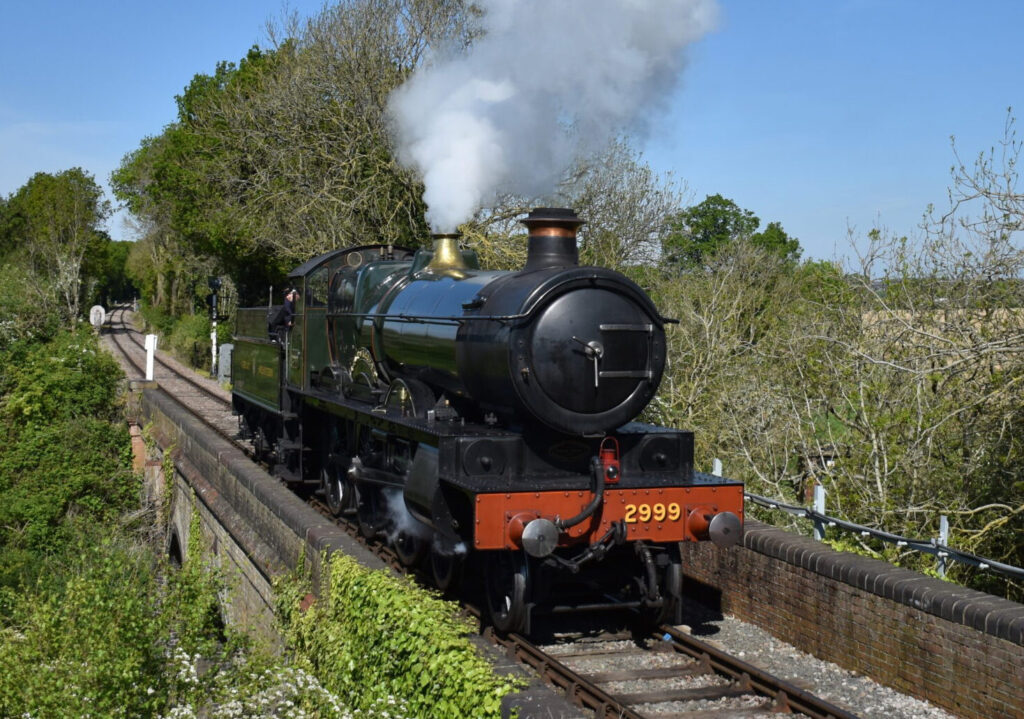
GWR Saint Class 2999 ‘Lady of Legend’
2999 Lady of Legend represents the long-lost GWR Saint class, one of the most significant designs in British railway history. Designed by George Jackson Churchward, the original Saints were built between 1902 and 1913, forming the basis for many later GWR locomotive classes, including the Hall and Grange classes (for which 6880 ‘Betton Grange’ forms another design brought back in new build format). Despite their historical importance, none of the class were earmarked for preservation and all members of the Saint class were scrapped by 1953.
The idea of recreating a Saint class locomotive using parts from a Hall class engine was first proposed in 1971. Inspired by the historical conversion of 2925 Saint Martin into the first Hall, the Great Western Society (GWS) identified 4942 Maindy Hall as a suitable donor. Purchased in 1973 for £4,000, it was moved to Didcot in 1974, but financial challenges delayed progress until the mid-1990s.
Revived in 1995, the project raised £70,000 within three months and work began once more. Engineers meticulously worked on creating the components they had available into a brand new Saint, making significant modifications to match the original design. This included fitting newly cast driving wheels of the correct size, modifying the frames, and altering the boiler.
A key challenge for the GWS was selecting an appropriate name and number for the recreated Saint. To honour GWR’s historical numbering system while distinguishing this locomotive, the numbers 2991 and 2999 were considered. Ultimately, 2999 was chosen for its distinctiveness. The name Lady of Legend was selected to align with other Saint class names while emphasising the locomotive’s unique status as a revival rather than an original survivor.
2999 Lady of Legend was completed in 2019 and has since been a firm favourite where the locomotive has visited, including the Severn Valley, Epping & Ongar and Mid Hants Railways. Based at the Didcot Railway Centre, Lady of Legend offers a unique glimpse into early 20th-century locomotive development, preserving an important chapter of GWR history and filling a void once left within the UK steam preservation movement.
The Bluebell Railway would like to thank the Great Western Society at Didcot for allowing their locomotive to be part of our 2025 Giants Of Steam Gala.
(Photo kindly supplied by Owen Hayward)

